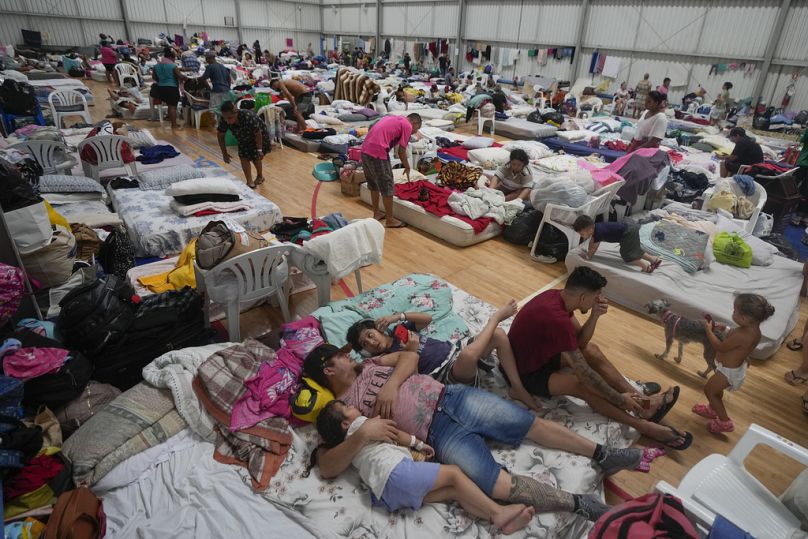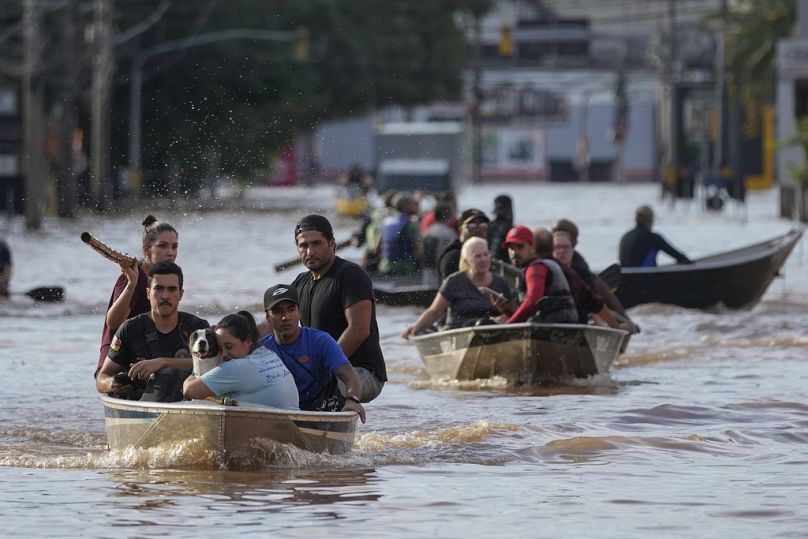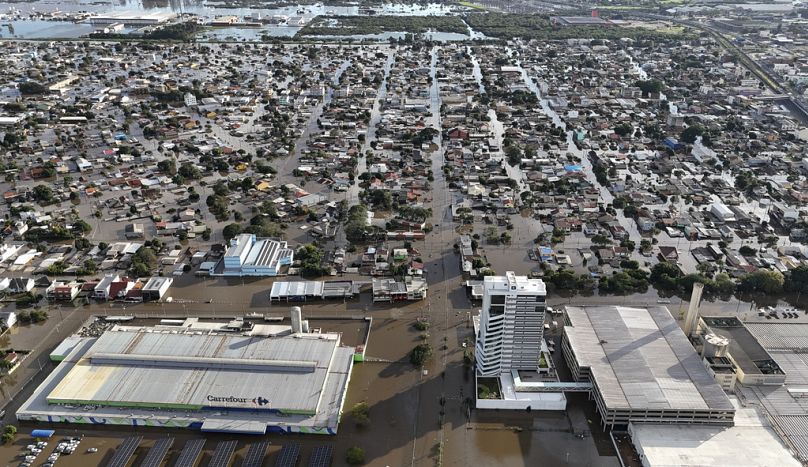Severe flooding leaves at least 100 dead and thousands homeless in Flooding in Brazil.
Heavy rains have caused catastrophic flooding in southern Brazil killing at least 100 people and leaving thousands more homeless.
The southern state of Rio Grande do Sul was hit by heavy rain last week and subsequent flooding has washed away roads, collapsed bridges, and caused landslides across the state.
The latest estimates from the state civil defense authority say that 372 people have been injured and as many as 128 are still unaccounted for. More than 1.45 million people across 417 of the state’s 497 cities have been affected and the latest estimates suggest more than 200,000 people have been displaced.
Rio Grande do Sul has been virtually cut off from the rest of Brazil with roads flooded. The state’s main airport has been inundated by water and could be out of use for at least 30 days.
Officials have said it is the “worst natural calamity” to hit the state.

In Porto Alegre, the capital city of Rio Grande do Sul, several water plants have stopped functioning leaving an estimated 80 percent of the population without access to drinking water. Supplies are being rationed and officials are distributing drinking water to hospitals and shelters in tankers.
Many have also been left without electricity after power companies cut off supplies due to security reasons.
Thousands displaced by flooding across Rio Grande do Sul
With thousands of people displaced, homes and businesses destroyed, and widespread destruction, Brazilian President Luiz Inacio Lula da Silva promised the government would do “everything in [its] power” to contribute to the recovery of Rio Grande do Sul.
But rescue efforts have been hampered by looting and the flood waters that still linger in the city. In Porto Alegre, police have been providing volunteers with security patrols using boats and even jet skis.
Thousands are still waiting to be evacuated and officials have called for anyone who owns “any kind of boat” to offer it to emergency teams. Around 15,000 soldiers, firefighters, police, and volunteers are working to rescue people and transport aid.

Brazilian Paralympic fencer Vanderson Chaves is one of those impacted by the disaster. He told the Associated Press that he has faced many challenges in his career but none as fearsome as these floods.
“There’s no way this wouldn’t affect me. To compete and to train well, you need to be well psychologically. And I’m not,” he said. The waters washed away his equipment, dozens of medals, and his passport and may even have thwarted his chances of reaching the Paris Games in September. He has also been displaced by the flooding.

“I come from an impoverished area of Porto Alegre. Everything for me is more difficult to achieve. I am Black, I am disabled. And now this.”
Residents are also reportedly facing shortages of essential supplies including drinking water. In many places, access to supply trucks or employees is completely cut off.
Authorities warn more rain is on the way
Downpours started on 29 April with more than 300 millimetres of rain falling in less than a week, according to Brazil’s National Institute of Meteorology (INMET). Flooding started in the north of the state and then subsequently inundated more southerly cities including Porto Alegre.
It is the fourth environmental disaster the Rio Grande do Sul has seen in a year after flooding hit in July, September, and November of 2023.
Still reeling from massive flooding, the state now faces the possibility of further storms. Brazil’s national center for natural disasters has warned the region is at “high risk” of more flooding. Weather forecaster MetSul said Rio Grande do Sul could face “very large” floods of “serious proportions”.

On Wednesday, Porto Alegre officials warned civilian rescuers to halt their operations because of forecasts for rain, lightning, and strong winds. INMET has also forecast a cold front this weekend with additional rains which will be particularly intense in the north and east of the state.
Army General Marcelo Zucco, one of the coordinators of rescue operations, told AP that his team was working at full speed before heavy rains that are forecast to hit the Porto Alegre area this weekend. Some improvement in conditions had helped his tea finally access some areas by land on Wednesday but more rain started to fall on the city that afternoon.








